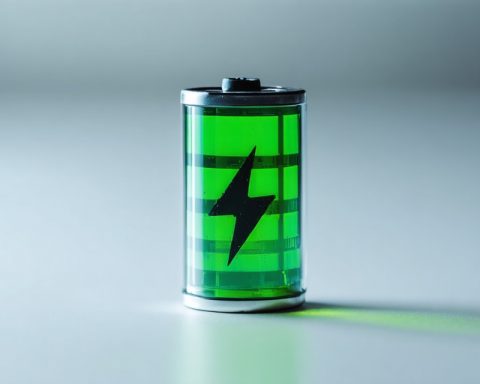- The electric vehicle battery recycling market is expected to reach $3.47 billion by 2031, with a 35.3% annual growth rate.
- This growth is driven by rising electric vehicle sales and the need for sustainable practices amid environmental challenges.
- Recycling allows the reclaiming of valuable metals, reducing reliance on raw mining and fostering a sustainable resource cycle.
- Asia Pacific leads in advancements in efficient battery recycling processes and material recovery.
- Challenges include complex extraction processes and high operational costs.
- A lack of awareness about the benefits and intricacies of battery recycling poses an additional hurdle.
- Collaboration among global stakeholders is crucial to transform battery waste into wealth as electric vehicles proliferate.
The future promises an electrifying transformation in the way we deal with depleting electric vehicle batteries. By 2031, the electric vehicle battery recycling market is projected to skyrocket to over $3.47 billion, riding a massive growth wave with a 35.3% annual growth rate. This surge is fueled by not just the growing swell of electric vehicle sales, but also the pressing need for sustainable practices in an era of mounting environmental challenges.
At the heart of this vibrant market lies the potential to reclaim valuable metals from spent batteries—metals that breathe new life into fresh batteries or find uses beyond automotive applications. This recycling process promises more than just reduced reliance on raw material mining. It fosters a sustainable resource cycle, effectively transforming how consumers and stakeholders perceive waste management for electric car batteries.
The pivot to zero-emission vehicles has triggered an evolution. Nations seek to align with greener transportation mandates, especially as the tide turns towards a tighter supply of certain battery components. Notably, Asia Pacific spearheads this transformation with rapid technological leaps in recycling processes—advances that aim to outperform in efficiency and material recovery.
Yet, this green revolution does not come without hurdles. The intricate extraction processes and hefty operational costs cap the potential of large-scale battery recycling. Moreover, a shadow looms over many, with gaps in awareness about the benefits and nuances of electric vehicle battery recycling.
The takeaway is stark yet hopeful: as electric vehicles dominate highways, embracing battery recycling becomes essential. With robust collaboration among global stakeholders, this market spells a future where waste transforms into wealth, one recycled battery at a time.
The Hidden World of Electric Vehicle Battery Recycling Unveiled
How-To Steps & Life Hacks in Battery Recycling
1. Collection: Initiate collection points for used electric vehicle (EV) batteries at dealerships and repair shops to streamline recycling.
2. Sorting: Implement a sorting system to differentiate batteries based on chemistry and condition, as this affects the recycling process.
3. Transportation: Use specialized transport vehicles to move collected batteries safely to recycling facilities.
4. Disassembly: Disassemble batteries to separate components, focusing on lithium-ion cells.
5. Material Recovery: Employ hydrometallurgical or pyrometallurgical methods to extract metals like lithium, cobalt, and nickel.
6. Reuse and Remanufacture: Utilize reclaimed materials to produce new batteries or apply in other industries, including consumer electronics.
Real-World Use Cases
– Battery Second-Life Applications: Repurposed EV batteries can power renewable energy storage systems, providing backup for solar and wind energy installations.
– Manufacturing: Reclaimed metals from recycled batteries reduce costs in producing new EV batteries, promoting affordability and sustainability.
Market Forecasts & Industry Trends
By 2031, the EV battery recycling market will experience a sustained growth rate of 35.3% annually, reaching $3.47 billion. The growth is bolstered by government mandates and incentives supporting the adoption of recycling practices and infrastructure.
Key markets in Asia Pacific, Europe, and North America are predicted to dominate due to advancements in recycling technology and heightened environmental awareness.
Reviews & Comparisons
Top Companies in EV Battery Recycling:
– Umicore: Known for their efficient closed-loop recycling process.
– Neometals: Offers sustainable solutions emphasizing recovery efficiency.
– Retriev Technologies: Recognized for innovation in material recovery.
Controversies & Limitations
– High Costs: The initial investment and operational costs of recycling facilities can be prohibitive, challenging smaller businesses.
– Technological Gaps: Incomplete technological solutions result in suboptimal recovery rates and process inefficiencies.
– Environmental Concerns: Potential for hazardous waste if not properly managed.
Features, Specs & Pricing
Specifications for a Recycling Plant:
– Capacity: Capable of processing up to 10,000 metric tons annually.
– Technology: Incorporates automated disassembly and advanced chemical extraction processes.
– Cost: Initial setup costs range from $20 million to $40 million, with ongoing operational costs varying by scale and location.
Security & Sustainability
Recycling facilities must comply with stringent environmental regulations to minimize pollution. The use of closed-loop systems enhances sustainability by minimizing waste outputs.
Insights & Predictions
Future Trends:
– Automated AI-driven sorting techniques will increase the efficiency of recycling processes.
– Policies enforcing producer responsibility will encourage manufacturers to design more recyclable battery systems.
Tutorials & Compatibility
Compatibility with Existing Infrastructure:
– Many EV batteries are designed with recycling compatibility in mind, facilitating easier disassembly and recovery.
Pros & Cons Overview
Pros:
– Reduces reliance on raw mining, decreasing environmental impact.
– Supports economic growth through material resale and job creation.
Cons:
– Technical challenges in efficiently reclaiming all battery components.
– High upfront investments hinder market entry.
Quick Tips & Recommendations
– Embrace Technology: Invest in cutting-edge recycling technology for increased efficiency.
– Foster Partnerships: Collaborate with tech companies and government bodies to secure funding and regulatory support.
– Education Programs: Launch initiatives to raise awareness about the importance of battery recycling.
For more detailed information on sustainability practices and advancements in recycling technologies, visit the International Energy Agency and U.S. Department of Energy.







